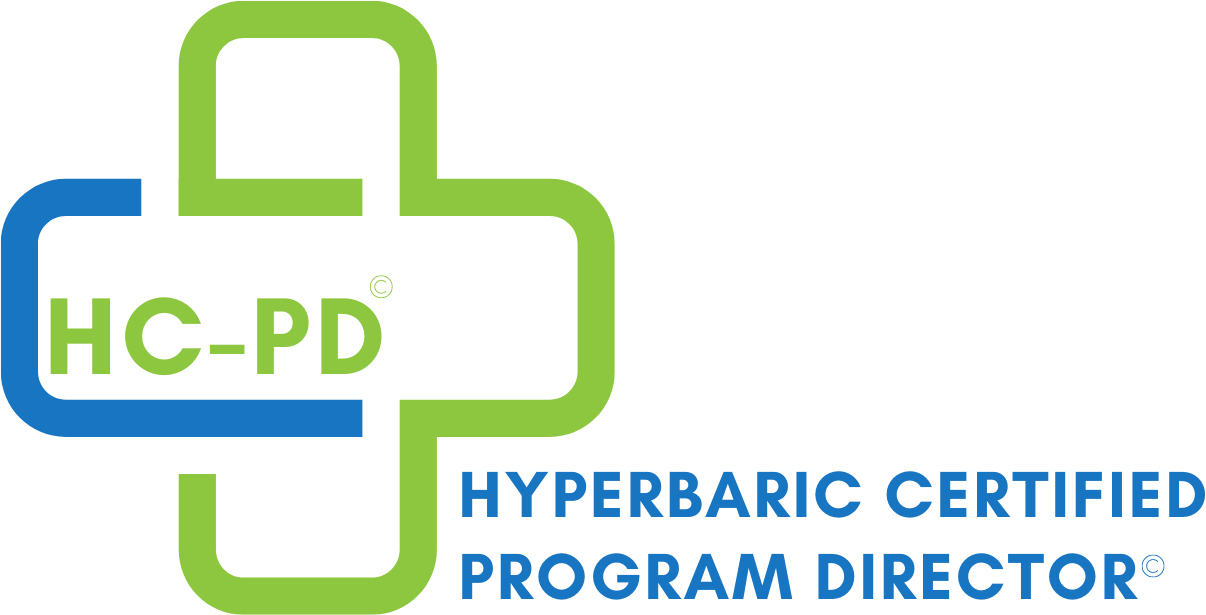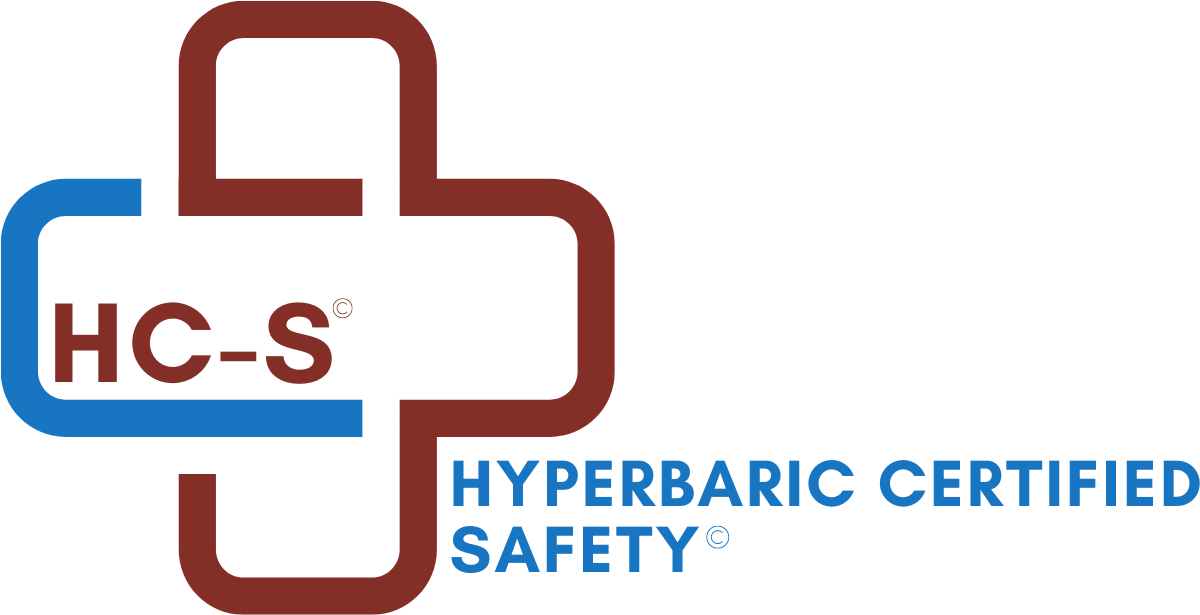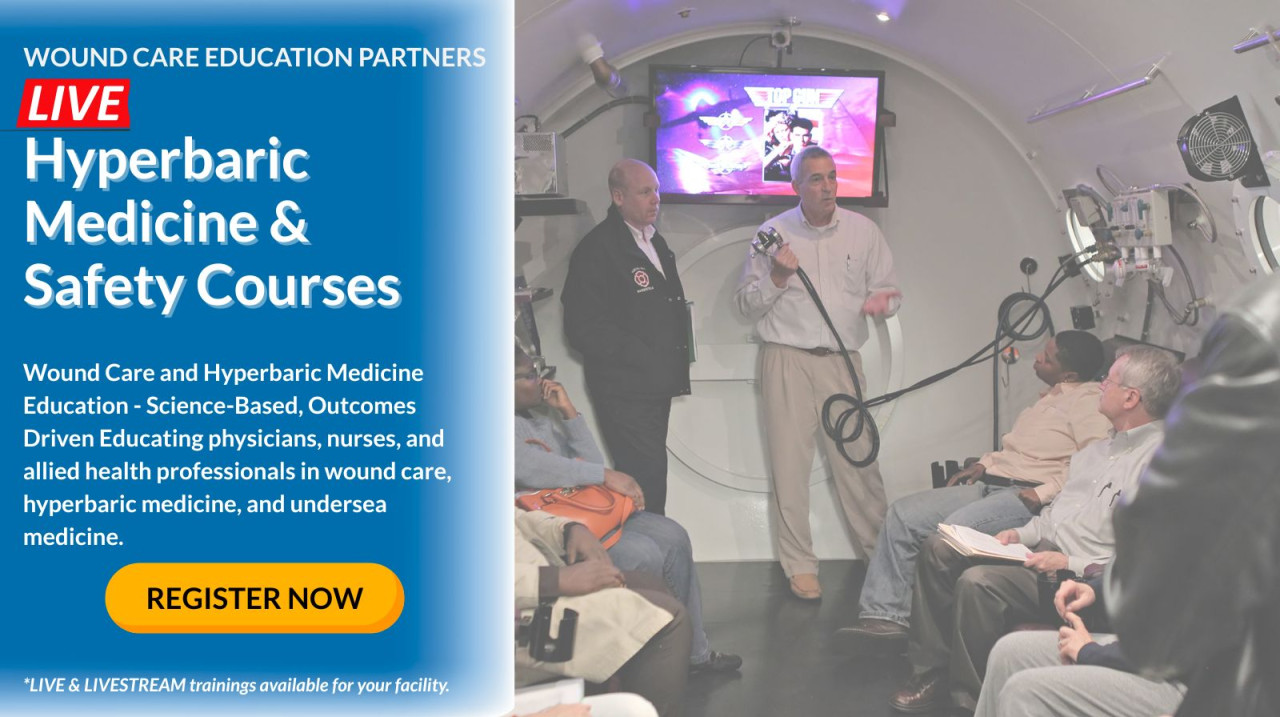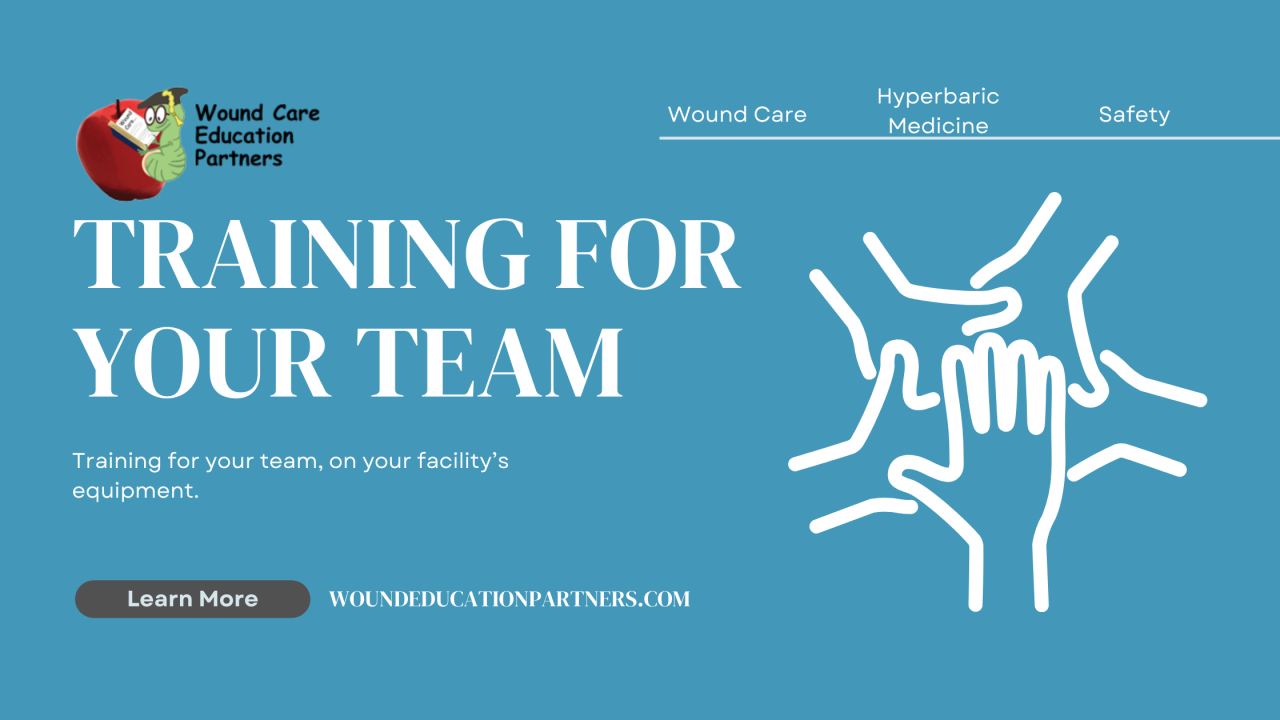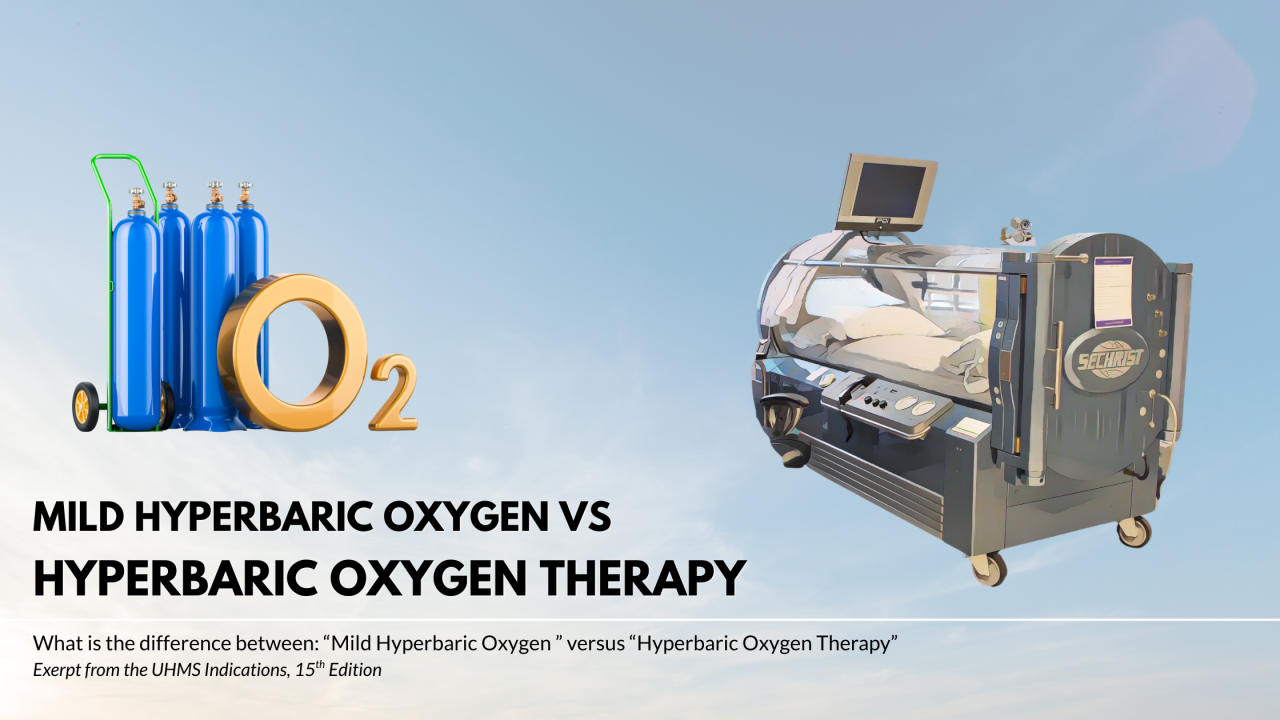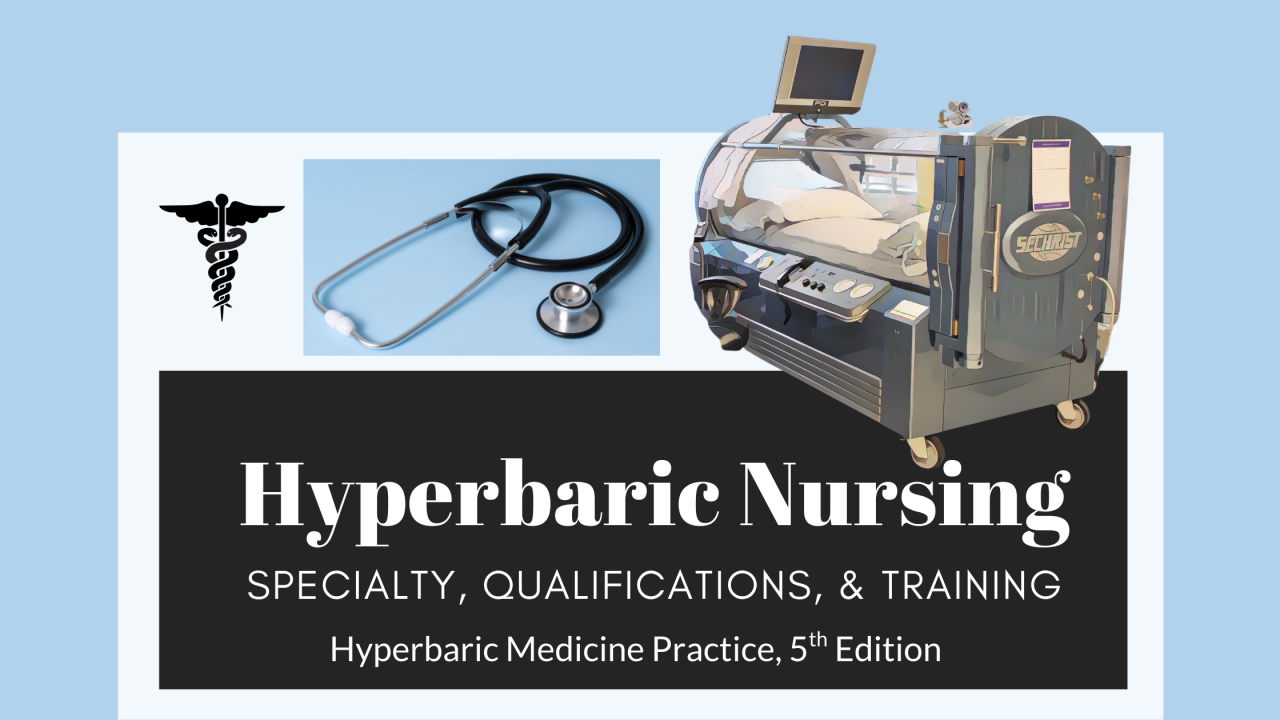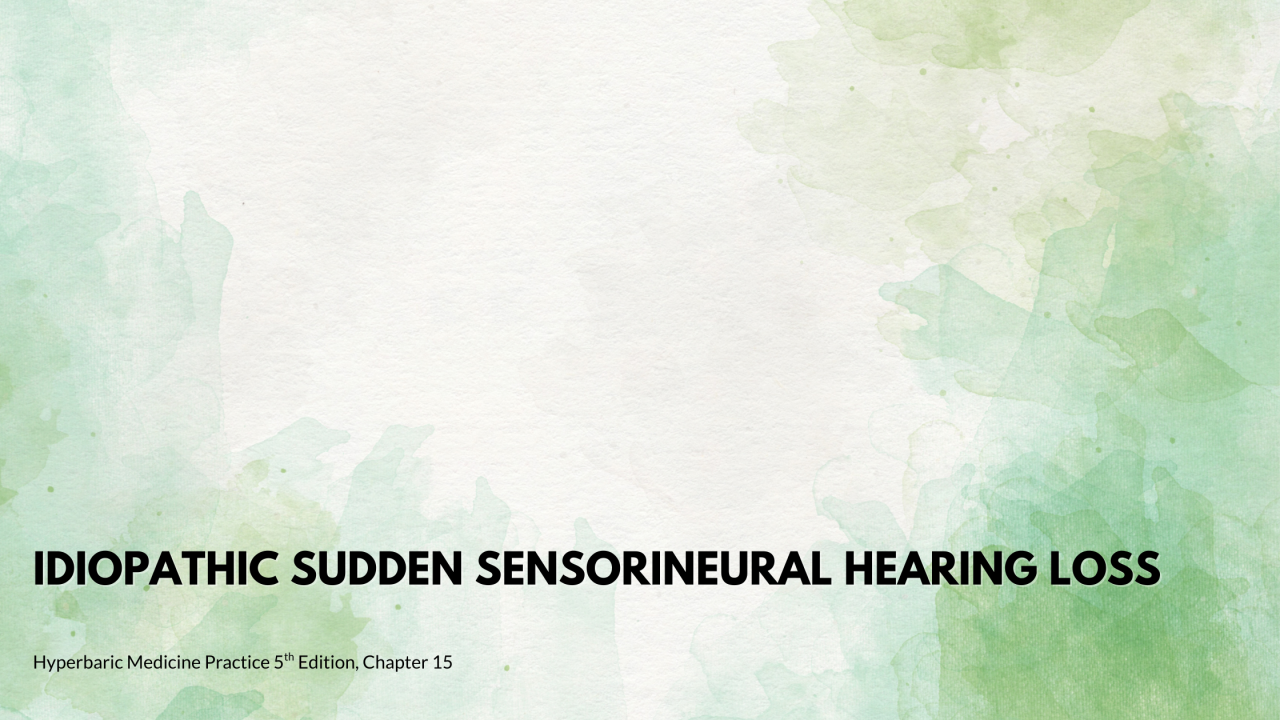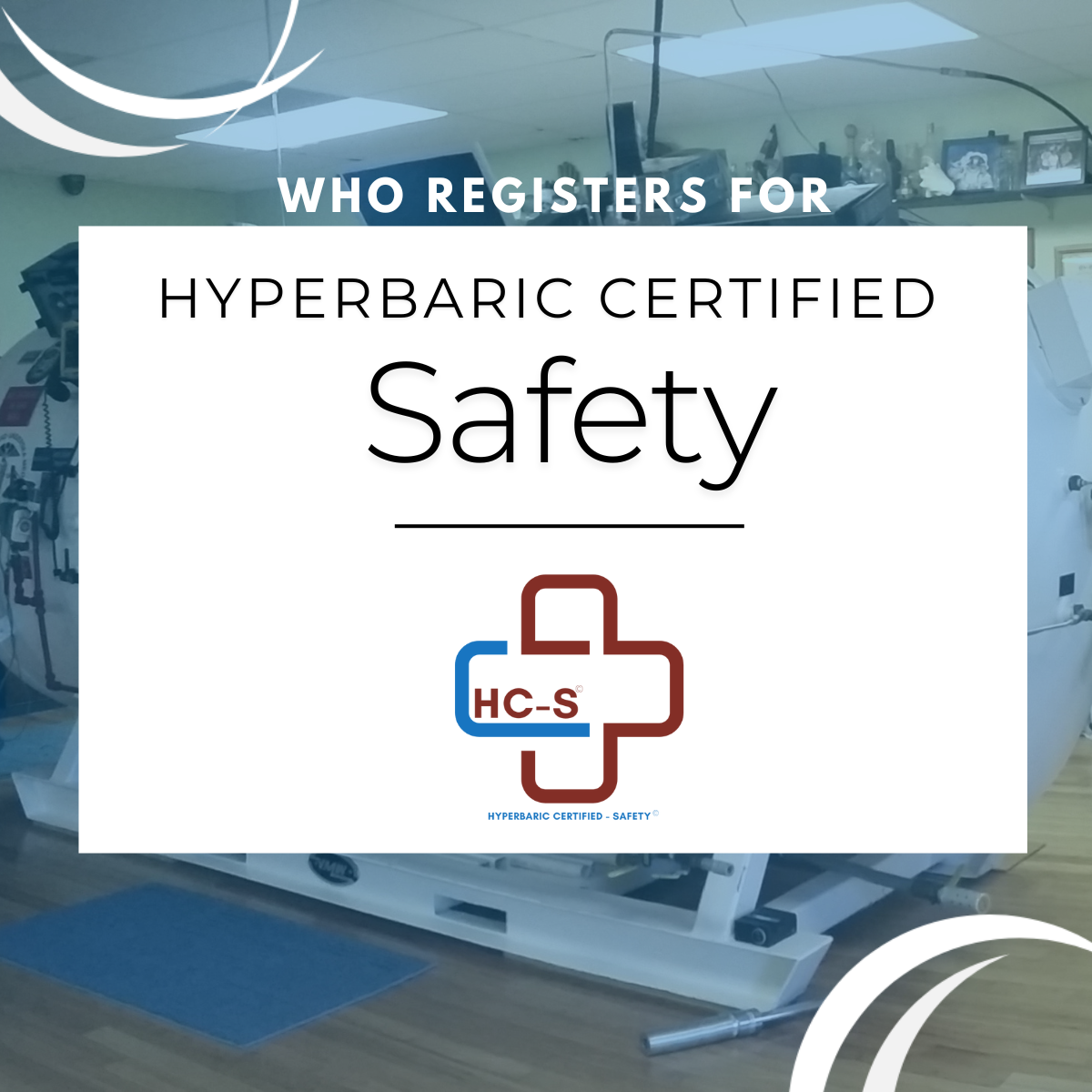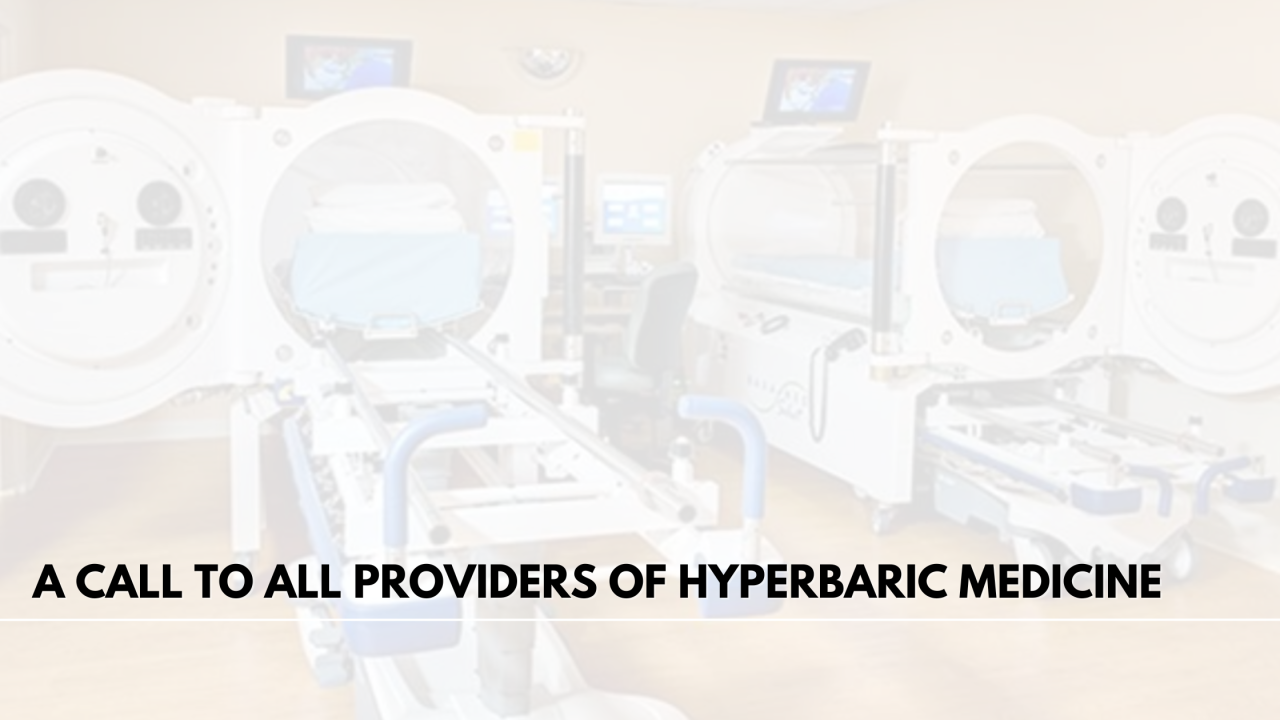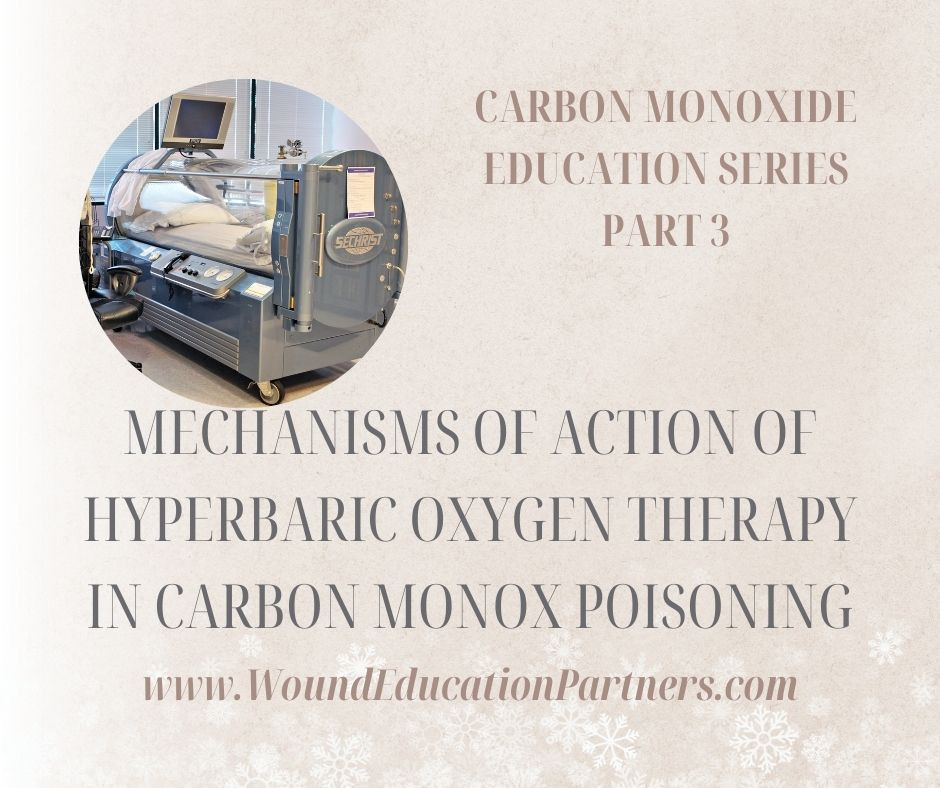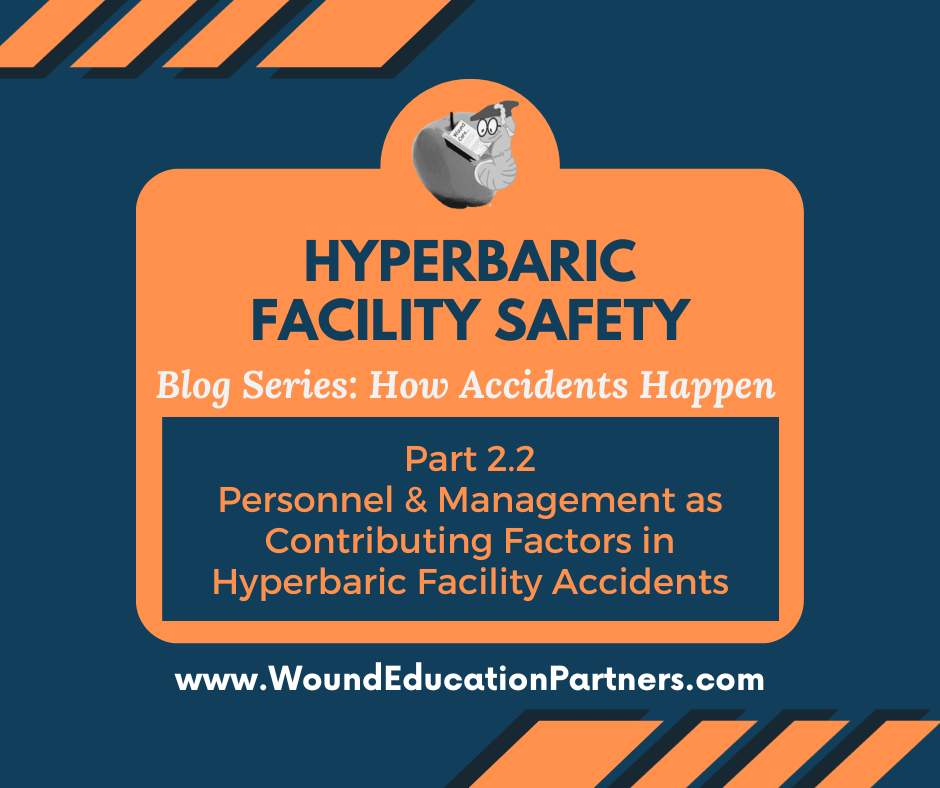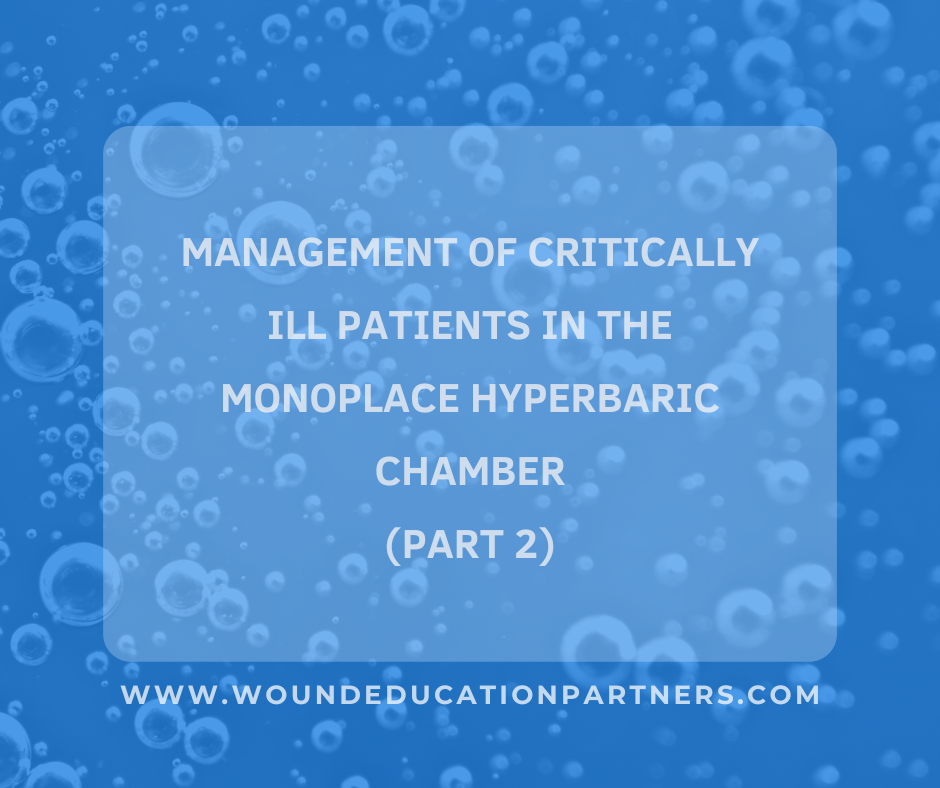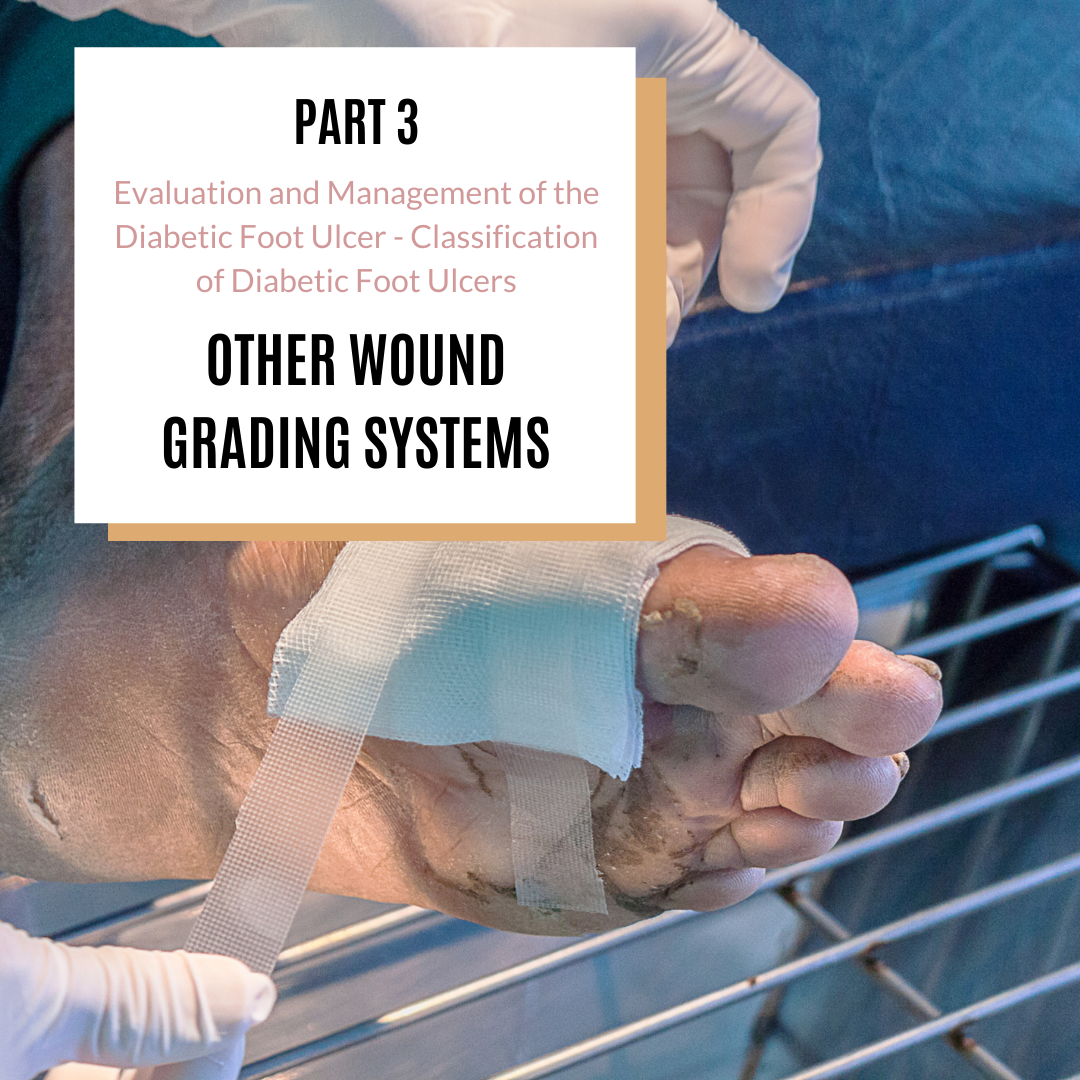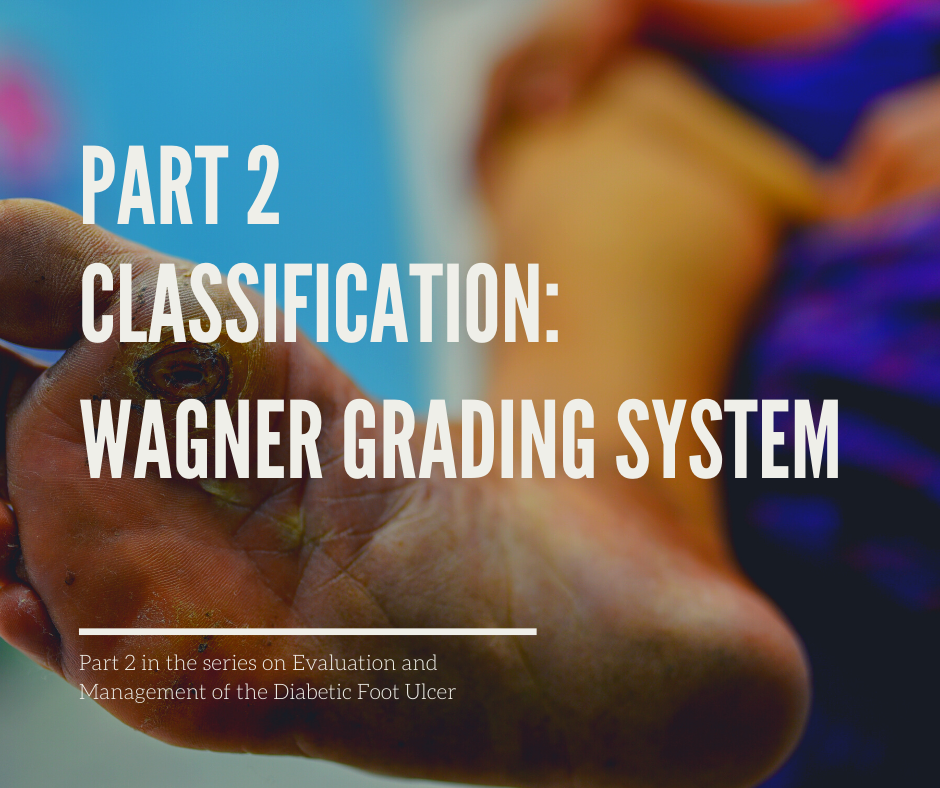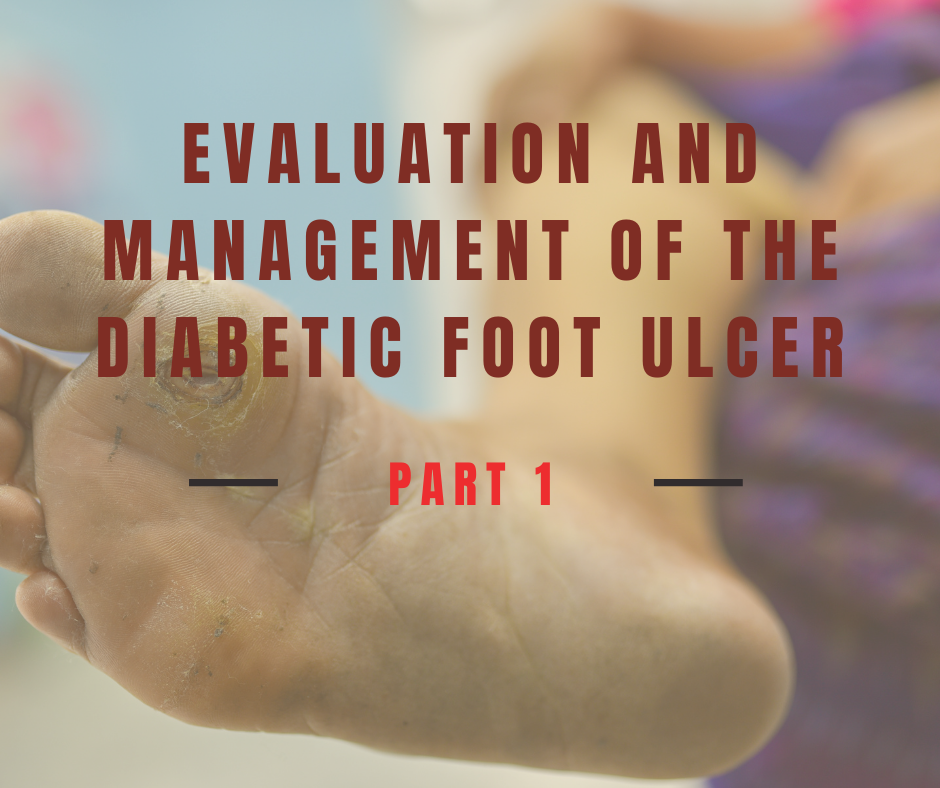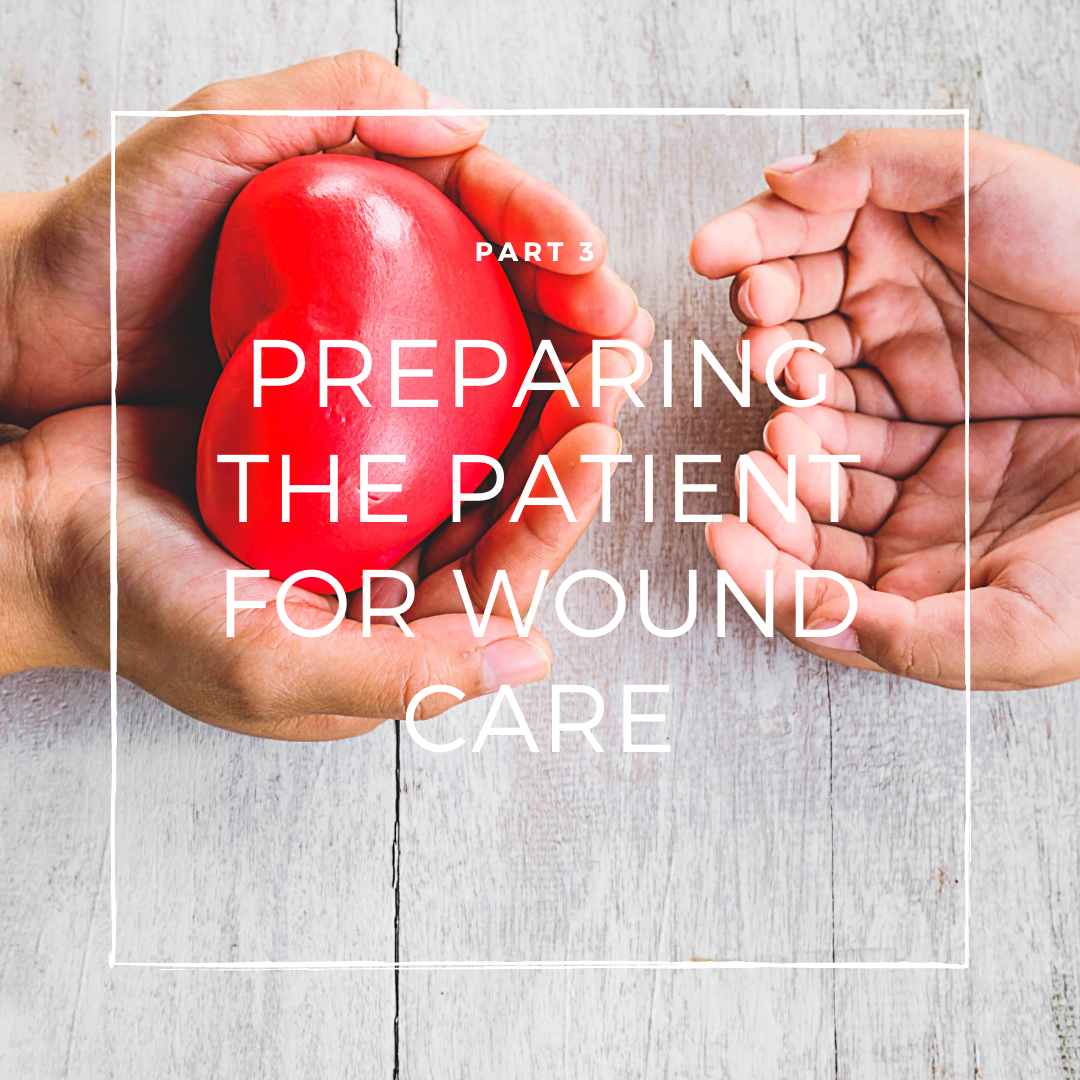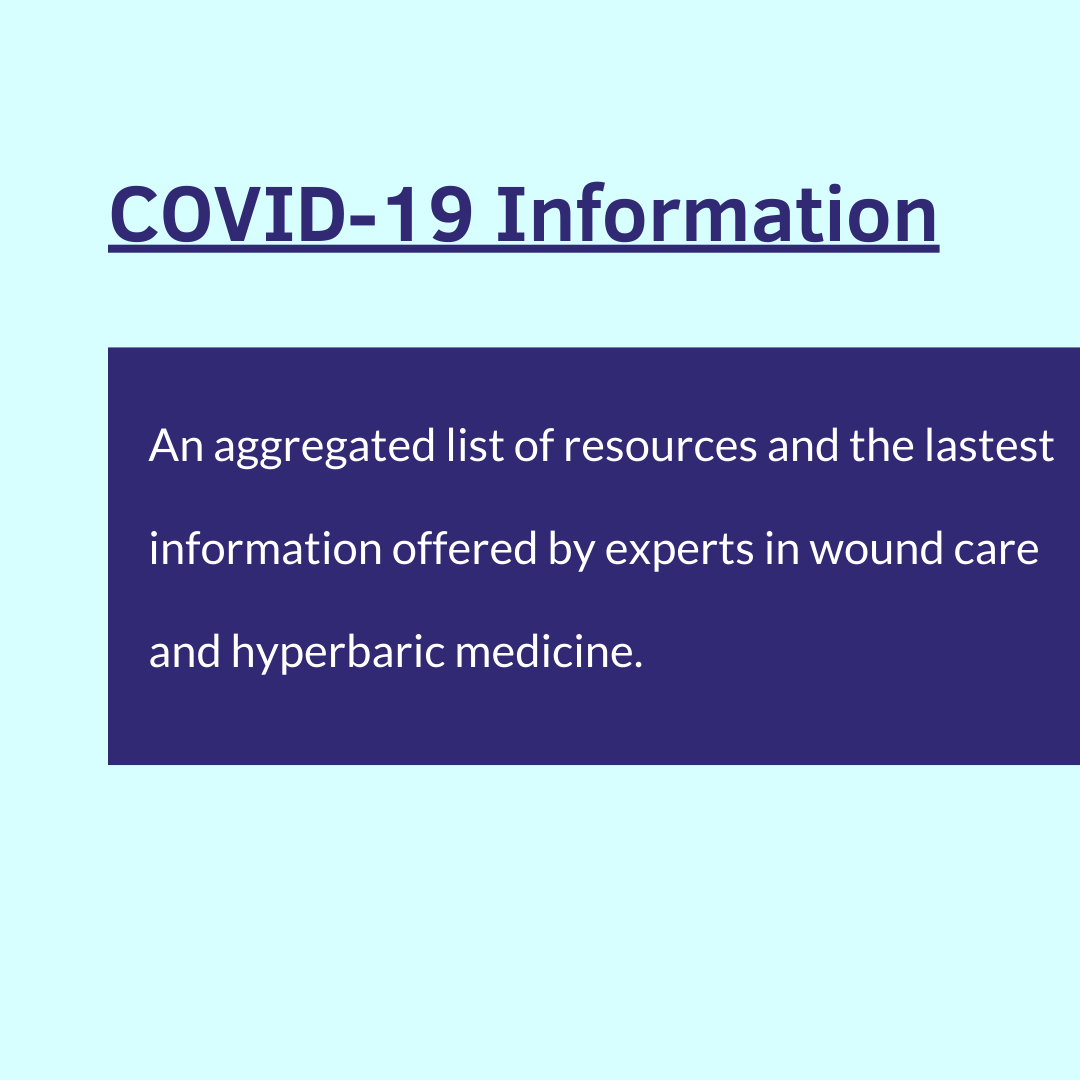Rx Pad
There are many the benefits of training your team at your facility. Talk to us about creating hybrid learning opportunities combining the ease of livestream and the practical, hands-on learning component of in-person.
Earn 12+ Hyperbaric CME, CEU Hours
Are you looking for hyperbaric-specific CME, CEUs in order to complete your recertification or to fulfill your CME, CEU requirements for hyperbarics?
Physician CME (as per the UHMS Guidelines for Hyperbaric Facility Operations):
"For an initial appointment or reappointment, physicians must complete at least twelve (12) hours of hyperbaric medicine-specific AMA PRA Category 1 CME."
CHT Recertification (as per the NBDHMT):
"Proof of a minimum of 24 (minimum of 12 Category “A”) CEU hours during the prior
two (2) years."
CHS Recertification Requirements (as per the ABWH):
"A minimum of 20 CME credits are required to re-certify. 5 CME credits must be directly related to the practice of hyperbaric medicine."
Attention Physicians: MD and DO, and those who assist them.
Are you clear on the recommended CME's for hyperbaric physicians? Do you know where to go to find critical information regarding the UHMS recommended guidelines for hyperbaric clinic operations? While this is not a "one size fits all" question, we do have some answers for you.
Clinic Administrators, Medical Directors, and Hospital Executives
LEADERS
Set out on your journey to gain or improve your skills as a hyperbaric program director.
The path to Hyperbaric Certified - Program Director starts here.
What is the difference between
"Mild Hyperbaric Oxygen" vs. "Hyperbaric Oxygen Therapy".
The following is given with permission for use of UHMS, Hyperbaric Medicine Indications Manual, 15th Edition granted by Undersea & Hyperbaric Medical, NPB, FL.
Choosing Hyperbaric Nursing as a speciality.
The specialty of hyperbaric nursing was formally recognized with the founding and incorporation of the Baromedical Nurses Association (BNA) in 1985. The BNA was established with 35 founding RN members at the joint meeting of the UMS Annual Scientific Meeting and the Long Beach Clinical Hyperbaric Conference. The BNA, which is international in scope, maintains a membership of 250 registered nurses from approximately five countries. Functions of the BNA include promoting professional activities that enhance the effectiveness of hyper-baric nursing in the health-care system and promoting educational opportunities and networking for nurses practicing in the specialty. Educational activities of the BNA can now be accessed online and focus on chamber and patient safety, patient compliance, evidence-based best practices, and quality improvement programs.The BNA develops and maintains standards-of-care guidelines in hyperbaric nurs-ing and supports nursing research efforts.(1,2)
The following article is an exerpt from the upcoming 2025 Nursing Textbook soon to be published by
Best Publishing Company. For more information on the release go to BestPub.com
INTRODUCTION to Wound Care Certification: Wound Care Certification Study Guide, Third Edition, was developed to encourage health care professionals to obtain recognized credentials in wound care, which should result in improved medical practice, competence,and patient outcomes.
Infection, Immunity, and the use of Hyperbaric Oxygen Therapy in Thermal Burns
A significant and consistently positive body of evidence from animal and human studies of thermal injury supports the use of hyperbaric oxygen as a means of preventing dermal ischemia, reducing edema, modulating the zone of stasis, preventing partial- to full-thickness conversion, preserving cellular metabolism, dampening inflammation, preventing infection, and promoting healing. The overwhelming majority of clinical reports have shown reduced mortality, length of hospital stays, number of surgeries, and cost of care. Hyperbaric oxygen has been demonstrated to be safe in the hands of those thoroughly trained in rendering this therapy in the critical care setting and with appropriate monitoring precautions. Careful patient selection is mandatory.
wound care courses
Chronic wounds may have cost the U.S. Medicare system as much as $95 billion dollars in 2014, which rivals the gross domestic product (GDP) of a small European country. Nearly 15% of all Medicare patients are affected, far more than have heart failure, although unlike heart disease, there are no recognized specialty training programs producing wound care experts to manage the growing epidemic of problem wounds. This is in part because a nonhealing wound is not actually a disease so much as it is a symptom. The typical patient with a nonhealing wound has an average of six serious comorbid conditions and takes an average of ten medications. If a wound fails to achieve healing, there is always a reason, and often more than one reason, with several different organ systems involved.
Aerospace Medical Association &
Undersea and Hyperbaric Medical Society:
Are you starting a new hyperbaric and wound care clinic, or overhauling an existing program?
Are you unsure where to start with regard to staff training and credentialing for your new hyperbaric and/or wound care clinic? Maybe you didn't know there's a basic training course available in hyperbaric medicine and wound care that is recommended by the medical society for our subspeciality, the UHMS.
The concepts of quality improvement (QI) and performance improvement (PI) in healthcare are not new and have been around in some form for many years. Implementing best practices and establishing quality and safety standards ensures that a hyperbaric department attains a high level of safe patient care.
Idiopathic sudden sensorineural hearing loss (ISSHL) is a medical emergency that presents with the abrupt onset of an unexpected sudden sensory deficit that is often underappreciated by patients, and at times by clinicians. Approximately 88% of sudden sensorineural hearing loss (SSNHL) has no identifiable etiology and is termed ISSHL. Otolaryngologists have intensely investigated ISSHL since the 1970s. Over the past 30 years, more than 800 articles, or 1 every 2 weeks, have been published in the English medical literature.(89) Idiopathic sudden sensorineural hearing loss is the abrupt onset of hearing loss, typically present upon wakening, usually unilateral, and involving a hearing loss of at least 30 decibels (dB) occurring within 3 days over at least 3 contiguous frequencies. As most patients do not present with premorbid audiograms, the degree of hearing loss is usually defined by the presentation thresholds of the unaffected ear. Other associated symptoms include tinnitus, aural fullness, dizziness, and vertigo.
General Mechanisms of Action of Oxygen in Infections:
With disease, oxygen delivery is compromised. The inflammatory response following infection is characterized by capillary leak and vasogenic edema that increases the diffusion distance between the vascular supply of dissolved and bound oxygen and adjacent tissues. Tissue edema also leads to variable degrees of tamponade and venous thrombosis, further compromising perfusion and oxygen delivery. Infection leads to microcirculatory shunting (reducing oxygen extraction) and mitochondrial uncoupling.
Have you heard of the Hyperbaric Certified - Safety (HC-S©) designation?
IMPORTANT ANNOUNCEMENT
Do you find yourself performing tasks in hyperbaric safety or as a Hyperbaric Program Director or Business Manager?
Are seeking advancement in the field of hyperbaric medicine? If so, this is an important weekend for you. Please read.
We receive a number of phone calls each week from folks inquiring how to become a Hyperbaric Technician, which is an added qualification to certain baseline credentials.
This article provides an update on the tragic death of 5-year-old Thomas Cooper in a hyperbaric chamber fire on January 31, 2025, in Troy, Michigan; and an important call to action to all providers of hyperbaric medicine from the Executive Director of the Undersea and Hyperbaric Medical Society.
Calling out to all Clinic managers, administrators, billers/coders, and medical directors:
Did you know there are ways to:
Manage revenue cycle to meet (and exceed) budget goals
Discover patient revenue left on the table due to incorrect medical coding
Increase patient load Become a profit center for the hospital
Five years ago Wound Care Education Partners wrote a blog "How to Become Certified in Hyperbaric Medicine". In those years since the original post the field Hyperbaric Medicine has grown significantly. According to hyperbaric oxygen therapy market insights the CAGR (Compound Annual Growth Rate) for hperbaric medicine s expected to increase by 5.8% over the next four years. (TechNavo; Jan 2025, "Hyperbaric Oxygen Therapy Market Size 2025-2029" )
This 5th Edition of Hyperbaric Medicine Practice, captained by Dr. Harry T. Whelan, is the most robust and monumental information source for undersea and hyperbaric medicine to date. Split into two volumes due to its size and detail, this 5th edition boasts six new chapters. With the help of 70 contributors from all over the world, Hyperbaric Medicine Practice has become the go-to authority for both studying and practicing hyperbaric medicine professionals.
HYPERBARIC MEDICINE & WOUND CARE TRAININGS
The 2025 January through March training courses are filling up quickly for wound care certification basic training, basic training in hyperbaric medicine, hyperbaric safety director training, and clinic business trainings.
Join us for in-person training for:
Have you ever attended one of our Introduction to Hyperbaric Medicine courses? Last week we had the pleasure of learning from Dr. Michael White, MD, UHM, MMM, CWS who taught Day 2 of the 4-day program.
Have you ever attended one of our Introduction to Hyperbaric Medicine courses? Last week we had the pleasure of learning from Dr. Larry Chase, MD, UHM, CWSP who kicked off Day 1 of the 4-day program.
A hyperbaric and hyperoxic environment creates numerous considerations for the use of drug therapies within it. First, the physical stress of hyperbaria impacts drug storage and has implications on which containers are most appropriate for use. Second, physiologic changes to the body from hyperbaria and hyperoxia may lead to pharmacokinetic changes in drug disposition. Lastly, hyperbaric oxygen acting as a drug can interact and enhance or ameliorate the physiologic effect of a drug.
Current knowledge indicates that there are multiple mechanisms of action of hyperbaric oxygen therapy in CO poisoning. Based on the law of mass action, elevated partial pressures of O2 will accelerate the rate of CO dissociation from hemoglobin. Thus, COHb half-life can be decreased from approximately 5 .5 hours when breathing air and to approximately 20 minutes when breathing O2 at 3 ATA. Indeed, this was the reasoning behind the first clinical implementation of hyperbaric oxygen therapy for CO poisoning. As the COHb level is not associated with clinical risk, it is hard to accept that a more rapid dissociation of CO from hemoglobin could be the central factor for the benefit of hyperbaric oxygen . A fraction of the acute mortality from CO is due to hypoxia, however, and prompt removal of CO from hemoglobin will be of benefit . HBO2 also promotes normalization of tissue hypoxia. CO binds to cytochrome oxidase, particularly when the COHb level exceeds 40% to 50% . Brown and Piantadosi demonstrated that hyperbaric oxygen at 3 ATA markedly accelerates the dissociation of CO from cytochrome oxidase. Furthermore, it was shown that HBO2 completely reversed brain mitochondrial electron transport chain inhibition by CO. Hyperbaric oxygen also has effects related to the cascade of vascular injury triggered by CO poisoning. Hyperbaric oxygen was found to be effective for preventing brain oxidative injury through increased heme oxygenase and upregulation of antioxidants. The mechanism appears to be associated with denaturation of a membrane-associated guanylate cyclase that plays a role in coordinating the elevated affinity of beta 2 integrins expressed on the cell surface. Given that vascular changes are prominent in clinical CO poisoning, it is feasible that neurological sequelae in patients may involve a perivascular injury mediated by leukocyte sequestration and activation. Moreover, HBO2 reduces neuronal apoptosis and necrosis, and it also mobilizes stem cells via a nitric oxide–dependent mechanism. Hence, timely administration of hyperbaric oxygen may ameliorate the cascade leading to brain injury via multiple mechanisms.
Carbon monoxide exposed patients commonly present with nonspecific symptoms that mimic influenza-like illnesses (Table 1). Symptoms typically include headache, dizziness, nausea, vomiting, weakness, and fatigue . The most common symptom reported is headache . Because these symptoms are so nonspecific, the treating physician must retain a high level of suspicion for carbon monoxide poisoning as delays in recognition and treatment are common .
Carbon monoxide is a colorless, tasteless, and odorless gas. It is one of the leading causes of injury and death worldwide. Based on death certificate data, mortality from unintentional, non-fire-related carbon monoxide exposures results in an average of 439 deaths each year in the United States. However, with improved data collection through the Center for Disease Control, estimates may be closer to 2,000 deaths per year. In 2014, the National Poison Data System listed gases/fumes/vapors as the leading cause of death in children five years old or less. Furthermore, carbon monoxide poisoning results in more than 200,000 emergency department visits per year and more than 20,000 hospital admissions.
Carbon monoxide (CO) originates from incomplete combustion of carbon-containing materials. Common external exposure sources include house fires, automobile exhaust, ice resurfacing machines, furnaces, burning of charcoal, wood, and natural gas for heating or cooking, propane-powered equipment, and methylene chloride paint stripper.
Another major source of CO is cigarette smoking. Average carboxyhemoglobin levels (COHb) of 3 .0%–7 .7% are found in heavy cigarette smokers, compared to 1 .3%–2 .0% in nonsmokers.
Carbon monoxide poisoning can occur occupationally (i.e. firefighters, ice resurfacing machine or forklift operators), unintentionally, and as a means of suicide. The incidence of carbon monoxide poisoning increases during power outages caused by natural disasters. Interestingly, since the introduction of the Clean Air Act in 1970, the mortality rate from motor vehicle–related CO poisoning has declined. Carbon monoxide is also produced endogenously through the degradation of hemoglobin by heme oxidase, resulting in detectable carboxyhemoglobin levels in nonexposed individuals.
In industry, the major factor for carbon monoxide exposure is inadequate ventilation where propane-powered vehicles are used. Exposures from forklifts and ice resurfacing machines have been reported. Other work environments that produce large amounts of CO, and therefore heighten the risk of poisoning, are the steel industry, due to coke ovens, and the paint industry, in which inhaled methylene chloride (dichloromethane) is metabolized to CO by the liver. Firefighters and other first responders are also at increased risk for CO poisoning from smoke inhalation and from entering environments with elevated CO levels unknowingly.
Men have higher rates of death from carbon monoxide poisoning, presumably due to higher risk behaviors and environments. The elderly (age ≥ 65) are also at increased risk for death from CO poisoning as they are more likely to dismiss symptoms as being caused by underlying medical conditions more prevalent in this population.
Women and children, however, are more likely to be exposed to carbon monoxide, and most exposures occur in the winter months (November to February).
Source Reference: Excerpted from Hyperbaric Medicine Practice 4th Edition with permission from the publisher. Reference Chapter 13, Carbon Monoxide by Jillian Theobald
Learn More
Are you seeking basic training in hyperbaric medicine? Our UHMS and NBDHMT approved 40-hour Introduction to Hyperbaric Medicine training course will teach you and your team the key fundamental elements and concepts in practicing hyperbaric medicine safely and effectively. Find your course today! https://www.woundeducationpartners.com/live-courses/hbo-courses.html
In this installment of How Accidents Happen we continue looking at personnel & management as contributing factors in hyperbaric facility accidents.
Type of Acrylic Windows used in Hyperbaric Multiplace and Monoplace Chambers
In today’s clinical and diving hyperbaric chambers, acrylic windows with PVHO-1 defined standard geometries and design criteria are used.1 Acrylic window shapes vary with chamber type and the window requirement of the specific chamber type.
In the past several years, there has been rapid growth in the number of clinical hyperbaric facilities, due in part to the availability of the monoplace, or single-person, hyperbaric chamber and the proliferation of outpatient wound care centers. Monoplace chambers are relatively inexpensive, require fewer personnel, and require less space to operate and maintain than multiplace (walk-in) chambers. Another advantage of the monoplace over the multiplace chamber is that attendants need not enter the hyperbaric chamber with the patient. However, some hyperbaric physicians express concerns about treating unstable or critically ill patients in the monoplace chamber, because of the lack of “hands-on” care during hyperbaric exposure, the lack of suitable equipment for optimal patient care, and the limitations of treatment pressures to 3 atmospheres absolute pressure (ATA). We have found that with a well-trained staff and the availability of appropriate equipment, critically ill patients can be treated safely in the monoplace chamber. We, and others, have presented monoplace chamber use in critically ill patients. Anyone who anticipates treating critically ill patients in a monoplace chamber should be familiar with this work.
Adequate wound perfusion and its delivery of oxygen to the healing tissues is fundamental to wound healing as just explained. Revascularization invariably is the first intervention considered to achieve this goal. Hyperbaric oxygen all too often is not considered in the management. In addition, other interventions can improve perfusion-oxygenation. These include edema reduction, improvement in cardiac function through medical management, and enhanced blood rheology using pharmacological methods. In contrast to the other four treatment strategies where typically a single technique is utilized, the methods to improve the perfusion-oxygenation strategy are complimentary, and typically two or more techniques are employed simultaneously.
The second source of information regarding perfusion-oxygen needs for wound healing arises from indirect information . It is obvious that markedly increased blood flow and oxygen availability are required to heal a wound and control infection.(19) Perfusion and oxygen requirements are minimal for noncritical tissues that do not have wounds or infections because they are in a steady-state, resting status. An example of this would be the feet of the patient with advanced peripheral artery disease. If a relatively minor wound occurs in one foot, healing may not occur, and a lower limb amputation becomes necessary. In contrast, in the opposite limb that does not have a wound, but perfusion is equally poor, the foot is not immediately at risk for an amputation.
In general, fire prevention is described in terms of the Fire Triangle model. For a fire to occur, a fuel, an oxidizer, and an ignition source must be present. Fire prevention in a hyperbaric chamber must account for an increase in the oxygen component of the atmosphere in terms of both oxygen fraction and partial pressure. The resultant increase in oxygen renders what might be inactive fuels and ignition sources in a “normal” air environment active, which increases the risk of a fire.
Wound oxygenation is an essential strategy for the management of wounds regardless of their severity. Fortunately, in most wound healing situations, autoregulatory mechanisms ensure that oxygen is adequate to meet metabolic requirements. When not adequate, wound healing may be impeded or even totally interrupted, infection may not be controlled, and tissues may die, leading to limb amputations . Wound oxygenation is a function of perfusion. This part of the three-part series discusses oxygen requirements for wound healing and control of infection and methods (and their rationale) for augmenting wound perfusion-oxygenation and introduces the subject of hyperbaric oxygen (HBO2) as a tactic for mitigating hypoxia in wounds in particular and in other conditions where HBO2 is useful in general.
Safety in a hyperbaric chamber begins with design and specifications that are incorporated in construction codes such as the ASME Boiler and Pressure Vessel Code. ASME and related codes establish minimum standards for materials utilized in the construction of a chamber and how those materials are fabricated.2 Subcodes address specific requirements for pressure vessels intended for human occupancy and the viewports utilized in the chamber.3 ASME codes focus on maintenance of the structural integrity of the chamber during routine operations as well as providing safety components such as pressure relief valves to reduce the potential for catastrophic failure of the chamber in the event of overpressure resulting from fire or other mishap. A chamber will undergo inspection, testing, and be stamped to indicate that it has been manufactured in compliance with the applicable pressure vessel code. In many locales, only stamped pressure vessels are allowed to be utilized.
For some accidents there is a clear “smoking gun.” However, most accidents are caused by a combination of factors, each of which contributes in some manner. Often these factors accumulate over some period of time preceding the accident. This chapter addresses the factors that foster conditions under which accidents are more likely to happen and discusses some of the steps to be taken to avoid them. Also included is a case history illustrating several of the factors.
Determing the best interventions, including dressing selection, for patients and their wounds requires looking at the situation holistically. Creating the treatment plan for a chronic wound is dependent upon many diverse patient, wound, economic, and social considerations. The dressing selection goes beyond simply choosing a product to cover the wound. Details assessments of the patient and wound should drive the components of goal-directed wound care. The health-care provider must determine the etiology of the wound, patient comorbidities that may impair the wound healing process (e.g. diabetes and blood glucose levels), nutrition/hydration status, systemic and local tissue oxygenation, and patient/familiy concerns such as pain and odor issues. Each of these factors contribute to creating an individualized plan for care for choosing the most appropriate products and interventions.
Copyright
© Wound Care Education Partners
We are pleased to announce Michael White, MD, UHM, MMM, CWS as the incoming Medical Director for Wound Care Education Partners. Dr. White is assuming the role from the outgoing Medical Director, Helen Gelly, MD, FUHM, FACCWS, UHM/ABPM.
In this 3 - Part series, we're looking at the most commonly used classification scales currently in use to classify diabetic foot ulcers, including:
There are many scales that attempt to classify diabetic foot ulcers, but few have been validated and none have demonstarated prognistic reliabilty or accuracy with regard to healing a DFU. Some scales focus on anatomy (depth of ulcer), some include vasular assessment, and others include the presence or absence of infection.
Diabetes mellitus is an epidemic of global proportion with a steadily rising prealence of disease. There were an estimated 28.9 million (21 million diagnosed, 8.1 million undiagnosed) adults with diabetes mellitus in the United States in 2012. The prevalence of diabetes mellitus among adults has quadrupled from 1980 to 2014. This rate continues to rise, with 1.7 million new cases reported in 2012. Globally, it is estimated that there are 422 million adults with diabetes mellitus.
This is the third and final installment in the series about how to prepare your patient for wound care treatment.
We have aggregrated information and resources for you that answer many questions and offer the latest knowledge, research, and treaments of COVID-19 as related to wound care and hyperbaric medicine.
